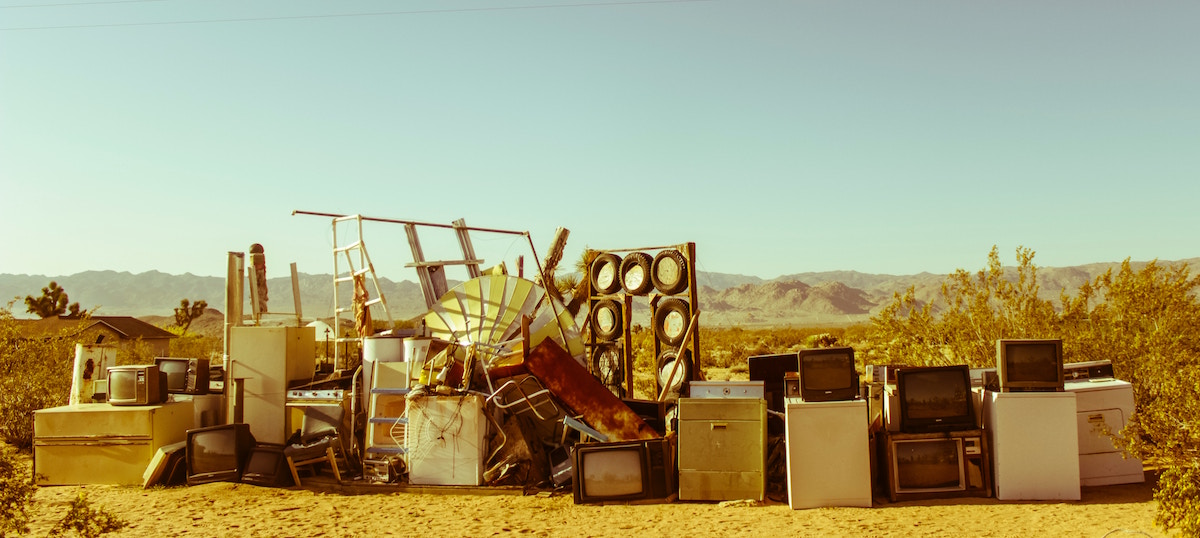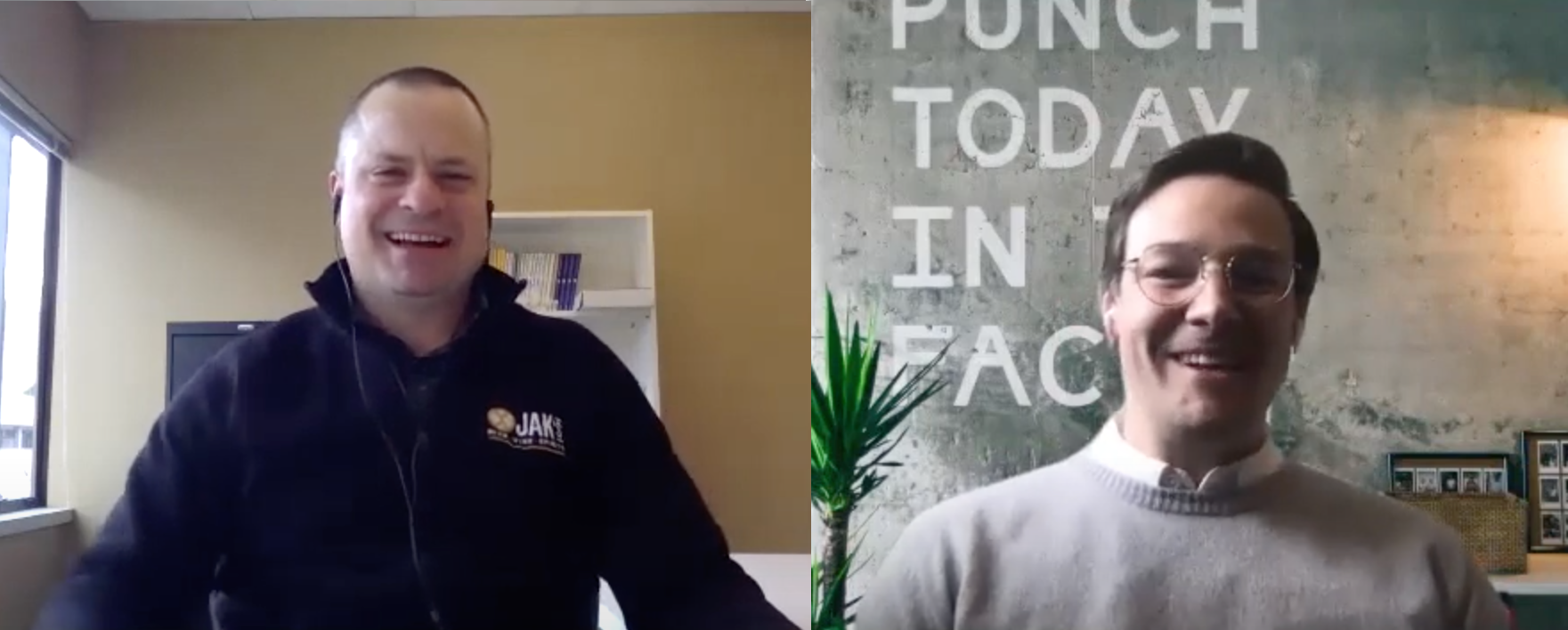[Video] 5 Common Mistakes to Avoid When Creating a COVID-19 Employee Vaccination Policy
I recently had a conversation with Laurie Ballantyne, one of our awesome new advisors (with a deep HR background), about the most common mistakes people make when creating COVID-19 company policies.
It can be hard to know what to do with such a challenging and polarizing issue. There’s a lot to consider - and it’s critical to get the right policy that takes care of people, from a business and personal perspective.
Approaches vary. Some have pushed ahead with 100% vaccination requirements, others want to give people complete choice, and still others are playing the wait-and-see game hoping government agencies will decide for them.
While we don’t know what’s right for you, we wanted to share Laurie’s insights about the mistakes she sees well-intentioned people making that end up leading to ineffective policies.
[1] Not enough thought about the consequences
In the rush to create a policy, it’s important to think about the potential impact and consequences of your decisions – and if and how you will deal with them.
Example: Your employee vaccination policy makes proof of COVID-19 vaccination mandatory as a condition of employment. But then you find out your top performer is not vaccinated, for whatever reason. With an “all or nothing” policy choice, you may lose an A-Player in a situation that could have been avoided with a little more due diligence before wrapping up the policy.
People choose not to be vaccinated – or cannot be vaccinated – for a variety of reasons. A leadership team’s role is not to debate sides or to change anyone’s mind. Their responsibility is to provide the proper protections for both vaccinated and unvaccinated employees to do their best to provide a safe work environment, psychologically and physically.
[2] Hope public health will make employee vaccination policy decisions for you
You are overwhelmed and uncomfortable deciding what is right for your people and your organization, so you do nothing.
Example: You have an outbreak when someone tests positive. With no plans in place about how to handle the situation, an employee files a complaint with the occupational health and safety governing body that you have not fulfilled your obligation as an employer to provide a safe work environment for employees. Not taking that obligation seriously can land you in hot water.
An employer is required to protect employees and to provide a safe work environment – to do whatever is reasonable. And “reasonable” is hard to define. We all know the minimum mandated public guidelines about social distancing and mask-wearing, but many companies are not good at reinforcing those habits in the work environment.
We all get loose when following guidelines when we think we have some armour of vaccination protection - and, sometimes, senior leaders can set the worst example by, say, not wearing masks in meetings. People need to remember that vaccinated people can still carry the virus. We are protecting not just the unvaccinated but the vaccinated, as well. There’s risk both ways.
With more due diligence, outbreaks that send people home sick can be avoided.
[3] No clarity on cost and execution
When you're in the boardroom, be aware of all the repercussions of your decisions. Ask:
- What are all the financial costs and logistics of implementing an employee vaccination policy?
- Who is responsible – and who wants that job?
- Is it reasonable ask that person?
- Are you putting them at risk by having them continually engage and interact with others?
Implementing and monitoring a policy takes time, energy and effort - and cannot just be given it to a random administrative person.
- If you accept regular testing of unvaccinated employees:
- What kind of tests? (PCR rapid antigen test, self-administered rapid…)
- Who pays for testing?
- Who administers and monitors it?
- Who hands out the tests and ensures they are administered properly?
- Do you provide appropriate space in your workplace?
- Who collects and reports the data?
Example: In Manitoba, when you get a pack of rapid tests from the government or a pharmacy, you have to record the serial number of the test, the person who took it, the date it was taken and the results. When the box of tests is empty, you take it and all the data back to pharmacy and trade it in for a new box. If someone tests positive, the result must be reported right away.
[4] Underestimating employee responses and the impact on their mental health
Your employee vaccination policy decisions can be far more upsetting than you anticipate.
Some people may not be sympathetic to the reasons others are - or are not - vaccinated.
Some people may experience a lot of anxiety about safety in the work environment, whether there will be accommodations to enable them to work remotely if they are unvaccinated, or if they may lose their job.
Here are two examples:
- A company communicated to their employees that they were working on a policy. They asked employees to self-declare whether they are vaccinated and said they were rolling out the policy on a certain date. When rollout day came and the policy still wasn’t ready, one employee admitted she had been so anxious about the anticipated policy, she’d lost sleep and was struggling to focus on work. The uncertainty affected the mental health of others, as well.
- A company indicated a condition of employment was proof of vaccination. While that worked for new hires, candidates who were existing employees are trickier. One candidate, who knew a policy was pending, asked to be put on hold and withdraw from the interview process until she knew what the policy was. She couldn't handle the pressure and anxiety of worrying about whether she would potentially miss or be denied an opportunity based on vaccine status.
Yet another company doesn’t allow discussions about COVID-19 and vaccinations, as part of their policy, because they can be deep and polarizing issues.
Don’t underestimate how different, difficult and significant people’s responses can be.
[5] No communications plan
A thoughtful strategy is required to introduce, execute and sustain the policy – and to go way above and beyond what you think is going to be necessary.
- Who is the dedicated team on your leadership group to answer questions, provide support and deal with a variety of responses?
- How will you handle resistance?
People are so busy doing what they're doing. They spent lots of time thinking about a policy and then roll it out without a plan and wonder why there's a wall of resistance.
summary:
Before you create your policy:
- Think about all the consequences before rollout
- Remember that your job is to protect and take care of all your employees
- Be clear the logistics and financial costs, including any accommodations you offer
- Understand the impacts on people’s well-being and stress levels
- Ensure you have a strong communications plan.
If you need additional assistance, or need help with ideas or troubleshooting, please reach out.
Lawrence & Co’s work focuses on sustainable and enhanced growth for you and your business. Our diverse and experienced group of advisors can help your leaders and executive teams stay competitive through the use of various learning tools including workshops, webinars, executive retreats, or one-to-one coaching.
We help high-achieving leaders to have it all – a great business and a rewarding life. Contact us for simple and impactful advice. No BS. No fluff.
Do What You Love and Invest in Your Sweet Spots
If you want to be a high-performing leader, invest 80% of your time and energy to do what you love, the way you love doing it. In order to do amazing things in your work and in your life, you need to focus most of your energy on the things you enjoy - otherwise you just get drained and depleted.
How good are you at spending the vast majority of your time and energy doing things that you love to do and are good at?
Unfortunately, when it comes to conventional wisdom, most people put too much energy into trying to fix their weaknesses. They try to rehabilitate in the areas where they're not strong. Now, that might make sense logically, but if you want to be a high-performing leader doing amazing things in your work and in your life, you need to focus most of your energy on the things you enjoy. Otherwise, you just get drained and depleted. Never mind that you might not be good at those other things, and it's a waste.
Do what you love and outsource the rest
I remember years ago, I was taught by a mentor, "Never forget the things that you dread doing, somebody else loves doing." Find somebody who loves that work and give it to them. Let them have the gift of doing the things that they love, and then you can be freed up to go and do the things that you love, that give you energy - and likely end up being a much more effective leader.
There’s a quote at the beginning of the chapter in the book Your Oxygen Mask First: "Success is achieved by developing our strengths not by eliminating our weaknesses."
As I share it upfront, it's conventional wisdom to work on weaknesses. We do it with ourselves, we do it with our kids - it's just not a great idea.
You need to work on this if:
- Most of your days feel like a struggle because you're doing a slew of stuff you just don't enjoy
- If you don't feel inspired to do the work on your to-do list.
- There are important high-value tasks you intend to do every week, but never get them done.
- There are aspects of your work that are mediocre, but you don't have the energy or desire to improve them because you just don't care
- You generally feel blah or drained at the end of the day.
All these things are indicators you're not working in your sweet spot.
Work and Environment
These are the key distinctions you need to think about to make this work:
- There's the work you do - the things that you love doing and are quite good at and continually get better. There’s someone's willing to pay you to do it in the work context (in your life doesn't matter).
- The environment you do it in
Some people love to work by themselves while others want to be surrounded by people. There are those who like work where the deadlines are urgent and others that like a huge amount of times to prepare. Some want to work on multiple projects, some only want one project at a time.
The truth is, it doesn't matter what it is, you just need to know your secret recipe for getting the best out of yourself. So, what is the work that you love to do? What is the environment that you love to do it in? Those two variables are quite different, and you’ve got to find where they intersect.
Key point: Invest 80% of your time and energy to do what you love, the way you love doing it.
The Challenge
Figure out your sweet spot.
- What is it you love to do and do well?
- What’s the environment you love to do it in?
If you find this hard to do top of mind, go to chapter 4 in the book. There's a whole bunch of exercises to help you understand your sweet spot. In addition, you'll gain insights about what has worked for you in the past and what might work for you going forward.
Download the Master Plan - the integrated plan for your entire life - in chapter 17.
The top center of that plan is your sweet spot - again, the kind of work that you love to do. Keep that front and center in your plans. The goal is to not get dragged doing things that you just shouldn't be doing.
Lawrence & Co’s work focuses on sustainable and enhanced growth for you and your business. Our diverse and experienced group of advisors can help your leaders and executive teams stay competitive through the use of various learning tools including workshops, webinars, executive retreats, or one-to-one coaching.
We help high-achieving leaders to have it all – a great business and a rewarding life. Contact us for simple and impactful advice. No BS. No fluff.
Managing Emotions and Dealing with Your Emotional Junk
Is your emotional junk causing bad decisions or regrettable behaviour?
Past traumas leave emotional junk in your brain, subconsciously affecting your behaviour and decisions. Your true capacity, as a leader, is to learn how to respond with intelligence, not emotion.
How good are you at managing emotions and not responding irrationally in tense situations?
The truth of it is, we all get very emotional at times - whether we're getting excited, angry, afraid (whatever the emotion happens to be), it has a huge, negative impact on us.
As leaders, when we're emotional, odds are we're about to do something that we're going to regret. I look at it in simple terms: when you get emotional, you get stupid. Your rational brain goes away, and it’s usually an indication you should stop and consider a better path - or consider taking some time to figure out a better path.
Note the quote we have in the beginning of the chapter,
"We are enslaved by anything we do not consciously see. We're freed by conscious perception."
Our emotions can enslave us if we're not aware of them, and they really truly get the best of us. So this chapter is about understanding the situations where you need to be more careful about your emotions so that you can be a much better leader.
Key point: Get rid of this emotional junk so it doesn't cause bad decisions or regrettable behaviour.
You need to work on this if:
- You back down from decisions you really want to make.
- What others think of you factors too heavily into your decisions. Obviously, it always factors into decisions, but if it's more than 10%, you probably need to think about looking further at them.
- You're sometimes shocked or embarrassed by your own behaviour
- Your emotional reactions are sometimes disproportionate to the situation at hand.
What happens sometimes (in human behaviour) is you'll have a situation where the intensity is a 2 out of 10 - like somebody looks at you funny or somebody frowns at you, but then you'll have an 8 out of 10 reaction, or a 12 out of 10 reaction.
That's pure emotion. That's your junk.
And if that's happening to you as a leader, that means you're getting in your own way. You are causing situations to be worse than they really need to be.
There's a great exercise in this chapter to help you understand this for yourself. We've all got junk. We've all got triggers that mess us up. So this exercise helps you to reflect and take a look at where you get yourself into most trouble - or better said, your emotions get you into the most trouble.
Exercise
- Fill out the Emotional Junk Grid to look at bad decisions or regrettable behaviors that you've had
- Write them down, then identify the emotional junk. What's going on inside that is causing you to do these crazy things?
- Come up with a workaround or a list of things you can do the next time you're in this situation.
One of my clients wisely said to me, "Most decisions can wait 'til the morning."
In situations where they can indeed wait 'til the morning, you're likely to make a better decision. Go back, figure out the situations you're likely to have an emotional reaction, and then your workaround to make better decisions.
Going back to the tools - if you haven't seen or used them already - these are the tools referenced in Chapter 17 of the book. They're also available as free downloads in the Book Resources section of the site. This is the quarterly review and reset tool. And in the middle of the page for the quarterly plan, you'll see there's an opportunity to note the habit that you want to focus on for this coming quarter. Maybe dealing with emotional junk is one of yours.
Emotions are Powerful
In summary, emotions are a very powerful part of our lives. They're what we use to persuade people to do the things that we want. They're the things that keep us out of trouble in dangerous situations. But when it comes to leadership, managing emotions and using them as a strategic tool is important so we don't have them bring out the worst in us.
World Suicide Prevention Day
Today is World Suicide Prevention Day and I wanted to share a few ideas that I’m hoping will help you either manage your own mental health or help someone around you that might be stressed.
Mastering Your Monkey Mind
A calm mind can find better solutions, make better decisions and be more creative.
Great. But how do you get a calm mind into today’s stressed-out world?
First you need to understand the ‘monkey mind’.
Your mind is constantly bombarded with stimuli. It’s full of questions, problems, lists, ideas and solutions…all scrambled together.
This is called the ‘monkey’ state of mind. It’s a lot of noise and clutter. Almost nothing is clear.
When you are feeling like your brain is overloaded and you’re struggling to solve problems, you know your monkey mind has taken charge.
There are simple things you can do to clear the clutter and reassert your calm mind – your master mind.
For some people, meditation is the thing. For others, an intense workout does the trick. For me, it’s writing.
When you are in your ‘master mind’ state, fireworks of ideas and solutions start to fly. So, it’s worth taking the time to figure out how to shift to that state.
Gratitude for The Change Thrust Upon Us
My colleague Tim Schokking recently sat down to speak with one of his clients, Tim Dumas, COO of JAK’s Beer, Wine, Spirits about finding gratitude for the change thrust upon us, during COVID-19. Tim Dumas has been sharing some valuable insight with a bunch of the CEOs we work with, so we thought it was worth sharing with others. As an essential service, JAKS has continued to operate during the lockdown, so we wanted to see what it’s been like and what are the keys to their success. What you’ll see is how Tim and his team at JAK’s leverage technology, keep the dialogue open, and continually look for ways to improve, especially when none of us know what the future holds.
Thanks for joining us, Tim. What’s changed for you and your team (because of COVID-19)?
Well, in the store, especially, are all the PPE measures that we do - the safety measures have changed a lot. And there’s a lot more communication because things are changing every day and week - especially now we're going to phase two of Covid in BC.
How do you stay on top of that with your team?
Zoom has been an amazing platform. We used it previously but now we use it all the time, and it’s been a great tool. When Covid first happened, we jumped in right away with calls twice a day, at 8am and 8pm. That allowed our people to ask any questions, for us to outline what we were doing and how we were making decisions, and to get feedback from our people about what they needed to be, and feel, safe. We got a lot of great ideas from those calls.
Would you say they were excited to be on Zoom at the start?
I think they were excited that we had that level of communication. I don't know they were specifically excited to be on Zoom versus in person. Our business is a very physical, in-person business. Before COVID, we didn't have an online store – we were a face-to-face business, as far as our customer base. So, initially, that was really hard.
I imagine you probably experienced some difficult times. How do you keep a positive attitude?
Well, the great thing we always do is look for a silver lining to any situation. When we did those calls every day, we’d start with professional development: almost like a one-minute TED Talk, or a video we got from YouTube. And – we’ve been doing this for years – we always start every meeting, going around the table, asking what we're grateful for. It can be just one thing. Today it can be bicycling, tomorrow it can be playing volleyball or being back in the office, socially distant, and seeing someone face to face. So, gratitude is really helpful.
There are so many people negatively impacted by this and we're lucky to still be able to work and have a livelihood. That was an area that we could be grateful.
“We could have decided to fall into the fear (but) we decided to be grateful for what we have…to minimize the risk and face that fear.”
There's a piece around how to cope with change: you either try to escape it or you try to control it, so I'm hearing maybe more of the control side. Is that right?
I don't even know if ‘control’ is the right word. I think it’s really important to be absolutely open. When we don't know the answer, we're really open with people about how we're making decisions. And if we didn’t have a decision, we’d show our matrix of how we're going to make that decision. We did jump in really quickly to do that which has been really helpful for people. We definitely brought them into every discussion on those twice daily calls, so anybody who had some something to say could be there, and we used so many of those calls to formulate policy.
How much of what they were saying did you try to implement?
Most of it – or, I’d say, all of it. We’d take all those perspectives and then make a policy or procedure from there. It was all about safety: making our people, our service champions, and guests feel safe- and to do the safest thing for the community. We took all those things into account.
We were really upfront, from the beginning that we can never completely, 100% manage risk but we were going to do all the things that we possibly could to minimize risk to an acceptable level - with gloves, with masks, with sanitizer and all those types of things. I mean we've used sanitizer so much that plastic door handles are actually falling off because they're being eaten away!
Speaking of handles falling off, is there anywhere, looking back at the last couple months of this change where you'd like a ‘take two’, as a leader?
I'm sure there are things that we could have done better, absolutely, but I really haven't focused on that. I look at what we're doing going forward and, if we ever make a mistake, look how we can change it. If there's a problem, we'll face it and change it because looking back and saying we should have done this, two weeks ago or a month ago, serves no purpose. We’re really focused on our purpose and where we're going in the future.
I can't really think of a terrible mistake we’ve made but we've made little pivots all along the way, and we've been really open with our team about that.
Any sense of what you need to be ready for, going forward, or advice you'd give to other organizations in terms of change?
I wish we all knew what things were going to look like in a month or two months or six months!
As far as advice: we were really intentional, from the beginning, about where we get our information – not from social media but from public health officials in BC and in Canada. We read everything, every day, and watch press conferences and utilize what they say. They have the most information and have our best interests at heart. No matter your political leanings, these are the times to trust in them. To speculate with not even half the information they have, doesn’t make any sense. So, we really followed what they were saying and doing, and in some cases, went even further with our safety.
“If I had any advice going forward, it’s to really make sure you get and understand the right information and to be upfront and transparent with your people.”
What is something that you're grateful for that you plan to carry forward?
What I'm grateful for, during this time, is that our family unit came back together. My wife and I have six kids and, normally, we're running in six different directions, taking different kids to different sports and activities. We've come back to have a family dinner again…and we've had a lot more time together. We go bike riding as a family or walk or just play and throw the ball in the front yard. And that's something that I certainly think that we will look at closer, in the future. Are we over-scheduling and running ourselves into the ground? I know many other people who are going to think about that more.
In relation to the business world, it's the same thing: the new world will not look the same as it did yesterday. I don’t know exactly what that looks like, but I do know that people will work from home, more. Most people in big cities commute a minimum of one hour a day - at least half hour each way - sometimes more. If we think about that time versus time to work and time with our families, if we just spent a couple days working from home, we can be a lot more effective and efficient, and that's going to make our communities a whole lot better.
Is there anything else you'd want to share?
The only thing I would say is that Lawrence & Company has been excellent during this time and I really appreciate the extra peer-group mentoring seminars. If anyone is thinking about doing that, they are absolutely outstanding and I hope that you might do that more often, moving forward.
And if I can add value to anyone, in any way, in their business or just as a sounding board for what they're doing versus what we've done, I'd love to talk to them.
I always appreciate that about you, Tim! Thanks so much!





